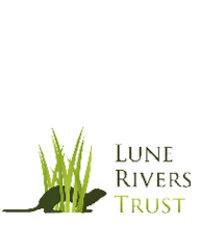


Local Sponsors
-
The Lune Rivers Trust
Crossing Cottage, Claughton Lancaster LA2 9RZ
The Lune Rivers Trust is a charity dedicated to the conservation, protection, rehabilitation and improvement of the River Lune catchment area.
More information
Many thanks to Jayne and Brian Knowles of High Borrow Bridge Farm for their invaluable assistance in facilitating the installation of our live water levels webcam at this specific location. Their support has been instrumental in ensuring the successful implementation of this project.The historical significance of the Hucks can be traced back to the 1500s in eastern Westmorland, which is now part of Cumbria. The presence of Huck's Brow and Huck's Bridge along the A6 serves as a tangible reminder of the influence they once held in this area.Huck's Bridge derived its name from Gerrard Huck, the First Toll Keeper who served there in 1777. The Huck family relocated from Shap to High Borrow Bridge during the mid-1600s, and their descendants have remained in the parish to this day, maintaining a long-standing connection with the region.Anne Hyelman's book, "A Life by Huck's Brow," “In 1745 they reluctantly played host to the remnants of Bonnie Prince Charles’s army, having the foresight to bury the pewter and oatmeal in the field behind. The rebels stayed one night and left the next day taking all the household footwear in exchange for the tattered remains of their own once fine shoes. The visit of the Highlanders and the burial of the pewter are well documented. Family tradition also tells that it was a devil of a job finding the buried pewter afterwards!”The construction of Huck's Bridge was attributed to Francis Webster in 1826, further adding to its historical significance.Located in Cumbria, west of the A6 road, the Crookdale Horseshoe encompasses a group of hills situated on the eastern edge of the English Lake District. These hills, featured in a chapter of Wainwright's book "The Outlying Fells of Lakeland," are known as the Crookdale Horseshoe. Wainwright describes a counterclockwise walking route that begins along the valley of Crookdale Beck, which later joins Borrow Beck before flowing into the River Lune. The route leads to Lord's Seat, also known as High House Fell, reaching an elevation of 1,719 feet (524 m). The return journey includes traversing Robin Hood at 1,613 feet (492 m) and High House Bank at 1,627 feet (496 m). Wainwright notes that the ridge forming the northern part of the 'horseshoe' is described in his Wasdale Horseshoe chapter, providing further context and reference for this scenic area.


